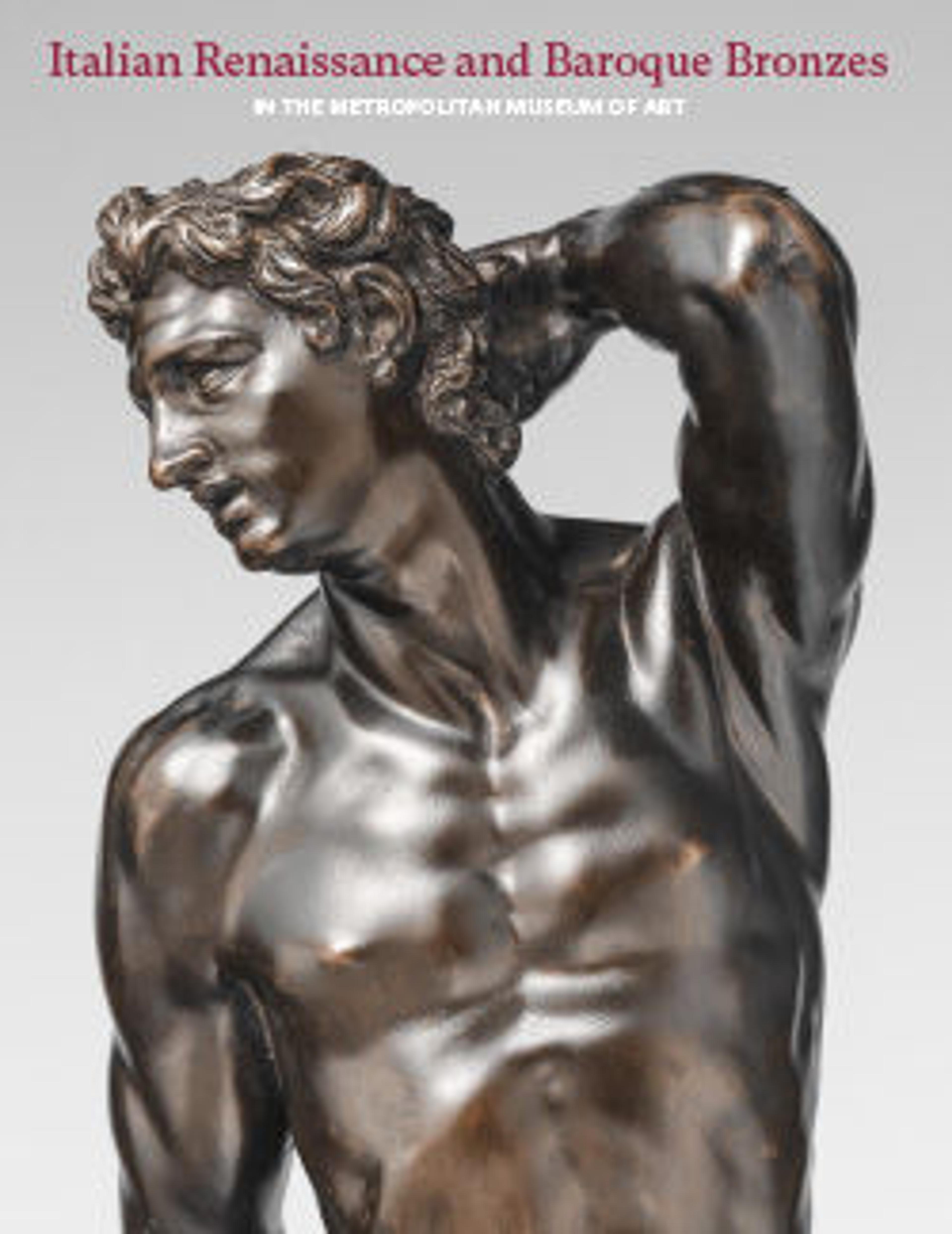Hercules carrying his club
These bronze statuettes of Hercules carrying a club under his left arm are variants of a prototype that, according to Leo Planiscig, was designed and cast by Nicolò Roccatagliata in Venice in the early seventeenth century. The Blumenthal cast (A) is smaller than the Mills (B). They also differ considerably in the degree of finish (the Blumenthal is much rougher), in the anatomy (the Mills body is much more robust), and even in the balance of the contrapposto (more pronounced in the Mills). This model of Hercules, in which the club’s weight is counterbalanced by the elegant movement of the muscular body, is known in many versions, among which the cast in the Kunsthistorisches Museum is unanimously considered the best.[1] Attesting to its fame, the model is included in Jacob de Wilde’s Signa antiqua of 1700 (fig. 68a).
Such representations of Hercules seem to have been reproduced in Venice over several decades, perhaps centuries, and pinpointing the date of a single cast is near impossible. Both Met examples seem to be later serial casts, possibly made in Venice, but it is unlikely they issued from the workshops of Roccatagliata or his followers. Among the two, however, the Mills Hercules, which is the partner of our Ceres (cat. 69), is possibly closer to the original prototype, as becomes clear when comparing it with the version in Vienna, and also with the one at Yale.[2] They were most probably intended to crown firedogs.
Footnotes
(For key to shortened references see bibliography in Allen, Italian Renaissance and Baroque Bronzes in The Metropolitan Museum of Art. NY: The Metropolitan Museum of Art, 2022.)
1. On the Vienna cast (KK 5724), see Planiscig 1921, p. 623, fig. 697; Planiscig 1924, p. 124, fig. 123; Leithe-Jasper 1986, pp. 182–84, cat. 46. For a discussion of the several other known versions, see Pressouyre 1966, pp. 257–59, and C. Avery 1998b, pp. 180–81, no. 109.
2. Yale University Art Gallery, New Haven, 1958.73.
Such representations of Hercules seem to have been reproduced in Venice over several decades, perhaps centuries, and pinpointing the date of a single cast is near impossible. Both Met examples seem to be later serial casts, possibly made in Venice, but it is unlikely they issued from the workshops of Roccatagliata or his followers. Among the two, however, the Mills Hercules, which is the partner of our Ceres (cat. 69), is possibly closer to the original prototype, as becomes clear when comparing it with the version in Vienna, and also with the one at Yale.[2] They were most probably intended to crown firedogs.
Footnotes
(For key to shortened references see bibliography in Allen, Italian Renaissance and Baroque Bronzes in The Metropolitan Museum of Art. NY: The Metropolitan Museum of Art, 2022.)
1. On the Vienna cast (KK 5724), see Planiscig 1921, p. 623, fig. 697; Planiscig 1924, p. 124, fig. 123; Leithe-Jasper 1986, pp. 182–84, cat. 46. For a discussion of the several other known versions, see Pressouyre 1966, pp. 257–59, and C. Avery 1998b, pp. 180–81, no. 109.
2. Yale University Art Gallery, New Haven, 1958.73.
Artwork Details
- Title:Hercules carrying his club
- Artist:After a model by Niccolò Roccatagliata (Italian, born Genoa, active 1593–1636)
- Date:possibly 17th century or later cast
- Culture:Italian, possibly Venice
- Medium:Bronze, on a later stone base
- Dimensions:Overall without base confirmed: 10 1/2 × 3 3/4 × 2 7/8 in. (26.7 × 9.5 × 7.3 cm)
- Classification:Sculpture-Bronze
- Credit Line:Bequest of George Blumenthal, 1941
- Object Number:41.190.55
- Curatorial Department: European Sculpture and Decorative Arts
More Artwork
Research Resources
The Met provides unparalleled resources for research and welcomes an international community of students and scholars. The Met's Open Access API is where creators and researchers can connect to the The Met collection. Open Access data and public domain images are available for unrestricted commercial and noncommercial use without permission or fee.
To request images under copyright and other restrictions, please use this Image Request form.
Feedback
We continue to research and examine historical and cultural context for objects in The Met collection. If you have comments or questions about this object record, please contact us using the form below. The Museum looks forward to receiving your comments.
